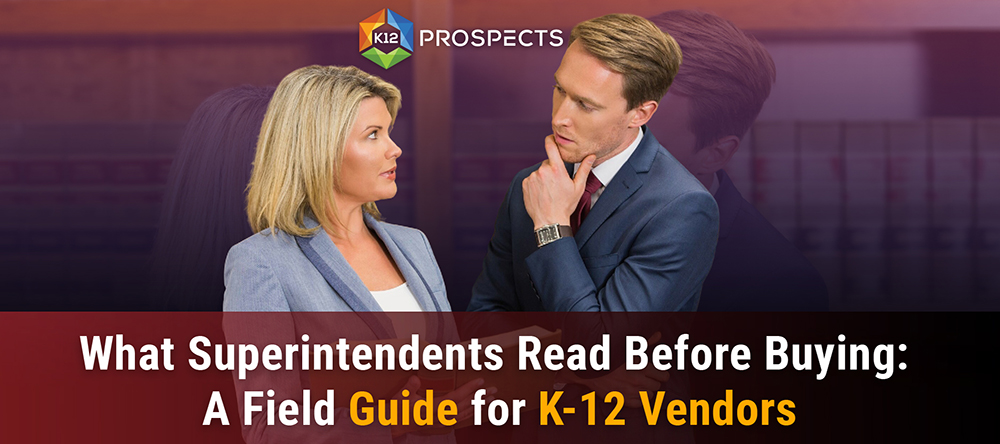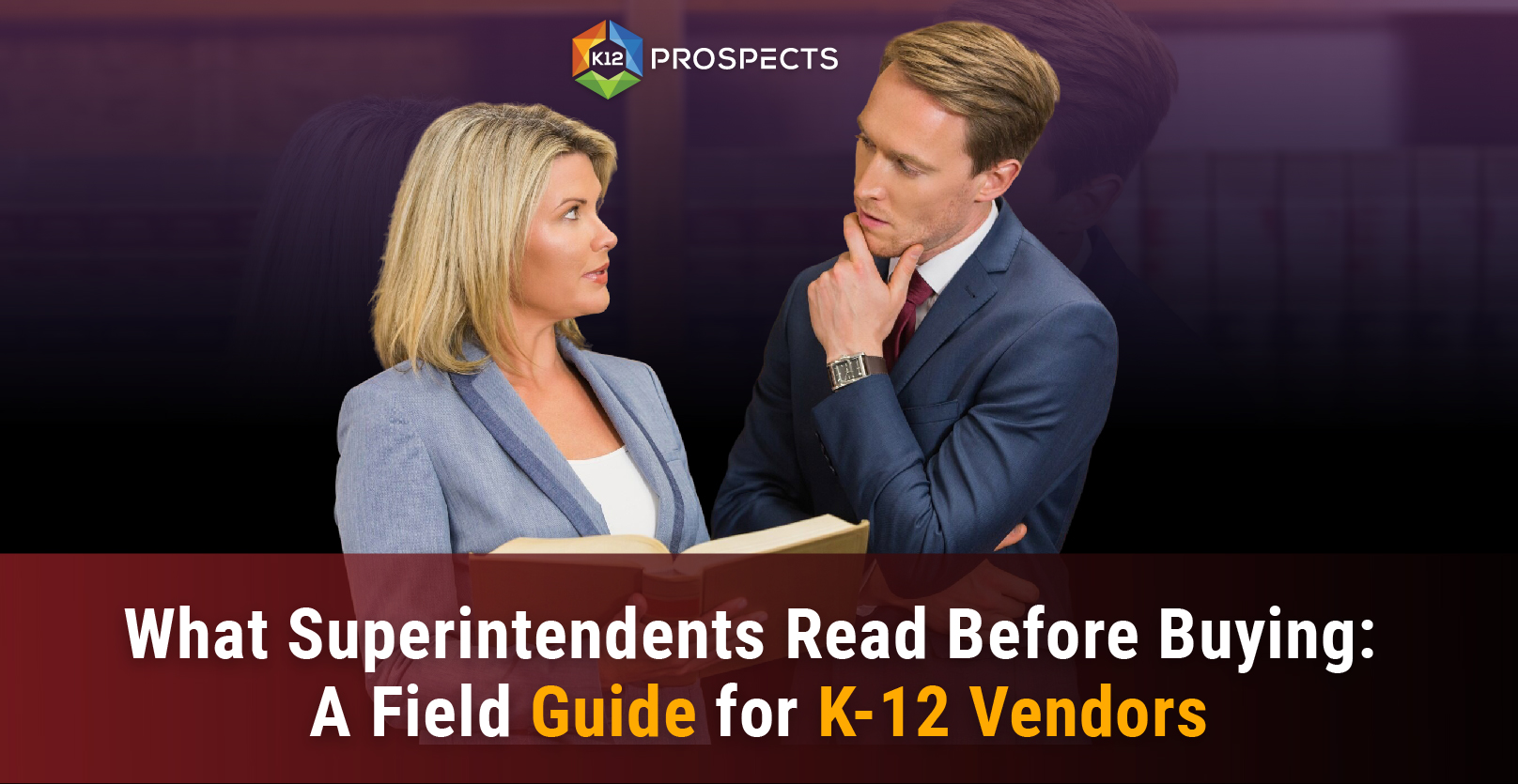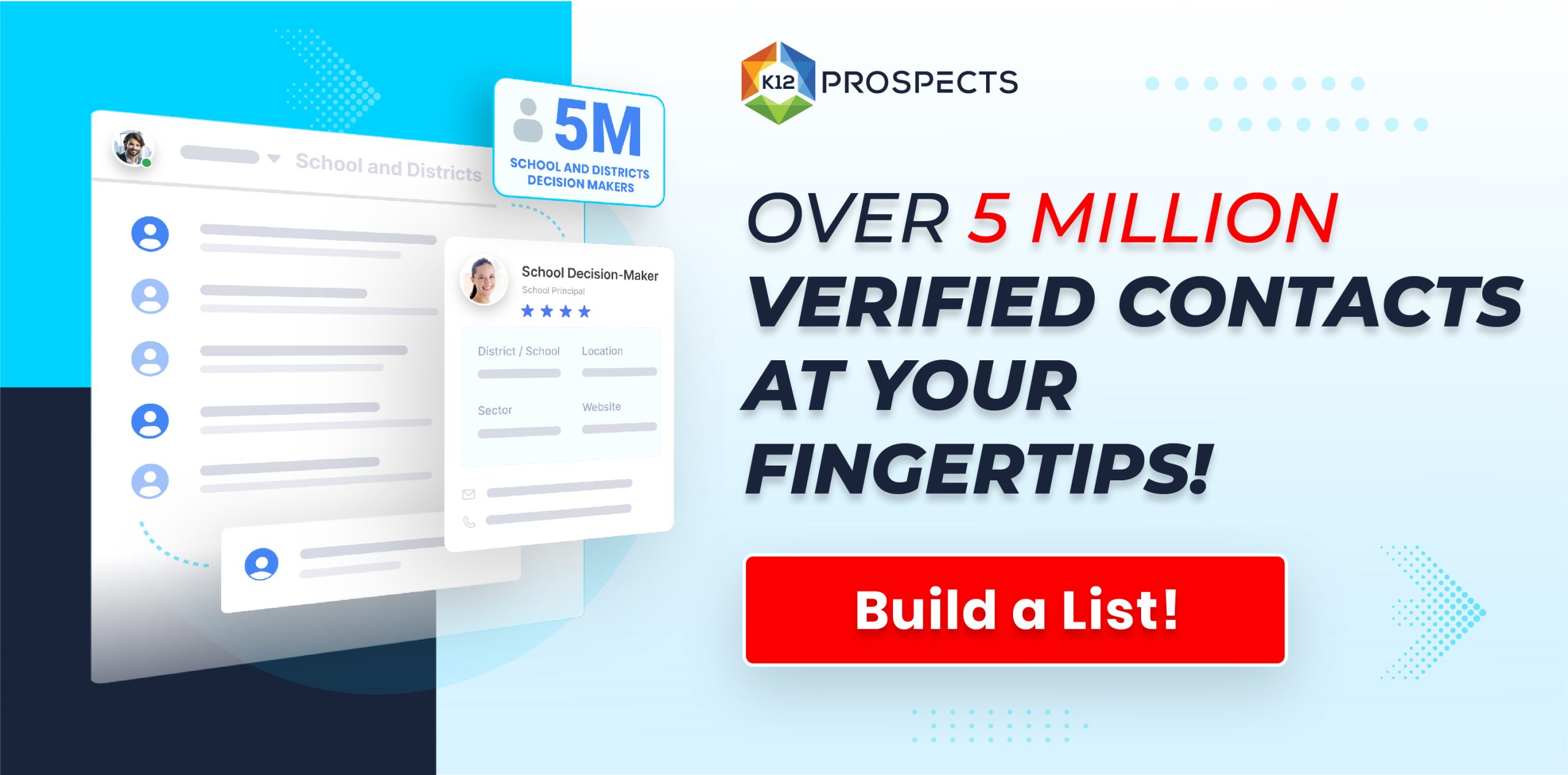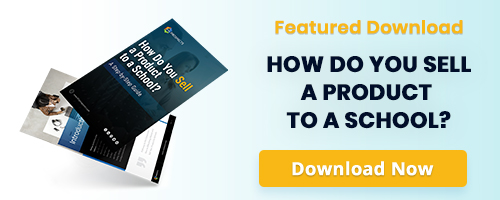What Superintendents Read Before Buying: A Field Guide for K-12 Vendors

Superintendents rarely make impulse purchases. They move through a predictable evidence-and-governance funnel designed to de-risk decisions, align spending to strategic goals, and survive public scrutiny. If you sell to K-12, your job is to anticipate what they’ll read before they can say “yes”—and to feed them the right artifacts at the right moments to earn a series of micro-yeses that culminate in approval.
Below is a practical map of that reading stack, concrete examples from large districts, and a plug-and-play “micro-yes” sequence you can apply to your next opportunity.
1) Board policy & procurement rules (the first gate)
What they read: Local procurement manuals, state code references, small-purchase thresholds, rules for RFPs/RFQs, cooperative purchasing, and sole-source justifications.
- Los Angeles Unified (LAUSD) publishes a detailed procurement manual and memos describing when single/sole source is allowed and how federal procurement rules apply. If your deal requires a sole-source memo, procurement will look for the exact language and attachments referenced in these documents. LAUSD+2LAUSD+2
- NYC Public Schools (NYCPS) procurement is governed by NYC rules and DOE procedures. Vendors are expected to follow the Division of Contracts & Purchasing guidance and understand “small purchase” mechanics under city rules (often a $100,000 cap). Vendors also register in PASSPort to land on bidders lists. InfoHubAmerican Legal PublishingNYC Government
- Houston ISD (HISD) recently spotlighted why board approvals matter: hundreds of millions in contracts required retroactive board action when internal purchasing steps were missed. Superintendents want partners who are board-ready—with clean documentation and contract vehicles that fit their thresholds. Houston Chronicle+1
Vendor action: Build a one-page “How to buy us” sheet per target district: which contract vehicles you’re on (state contract, cooperative like Sourcewell/OMNIA, district-level awards), the district’s thresholds you fit under, and the exact documents procurement will ask for (W-9, insurance, data-privacy addendum, sole-source letter, etc.). Back it with citations to the district’s policy pages.
2) Strategic plan & current priorities (the alignment test)
What they read: The district’s strategic plan, board goals, and current initiatives (literacy, tutoring, CTE, MTSS, AI guidelines, attendance, safety).
Superintendents must show that spend maps to board-approved goals. In surveys since ARP/ESSER, they consistently elevate staffing, instruction, and student mental health—and worry about sustainability as federal aid dissipates. Expect them to check your alignment against these pressures. DefaultAASA NCE 2026
Vendor action: Mirror the district’s own language. Start your one-pager with “Alignment to Goal 2: Early Literacy,” not with features. Include 2–3 relevant KPIs you’ll move.
3) Budget & funding narrative (post-ESSER reality)
What they read: Funding source options, total cost of ownership, and sustainability plans now that ESSER obligation deadlines have passed (with limited liquidation extensions).
- The U.S. Department of Education set the final obligation date for ARP ESSER as September 30, 2024; districts are scrutinizing ongoing costs and non-ESSER funding paths. S. Department of EducationCalifornia Department of Education
Vendor action: Provide a funding map: which pots can pay (Title I/II/IV, IDEA, Perkins, general fund), sample coding, and a 3-year TCO with ramp-down options. If you have a cooperative price that fits under “small purchase,” say so explicitly for each district.
4) Evidence & peer validation (credibility check)
What they read: Independent research, pilots, case studies from demographically similar systems, and implementation fidelity details.
- Digital Promise profiles district decision patterns (e.g., Lynwood USD CA, Talladega County AL, Fullerton SD CA) that stress time, budget, and practical vetting of edtech—superintendents will look for the same markers in your materials. Digital Promise
- Many districts’ own playbooks remind leaders that higher-cost purchases often require board approval and evidence of need—so your evidence packet should be formatted the way they present to their board. Digital Promise
Vendor action: Build a Board-Ready Evidence Deck: 2 pages per outcome with method, sample size, baseline/comparison, and a superintendent quote. Include a pilot-to-scale plan with success criteria and data-sharing cadence.
5) Compliance & risk (quiet deal-killers)
What they read: Data privacy agreements, security posture, accessibility (WCAG), student safety features, contract indemnification, insurance, and in NYC, even how you’ll be paid (e-payments over $25k are mandated). NYC Government
Vendor action: Pre-assemble a Compliance Packet: signed DPAs where available, SOC2 or equivalent security summary, SSO capabilities, student-data minimization, DPIA template, accessibility conformance report, and insurance certificates meeting district limits.
District Deep Dives (what “good” looks like)
A) Selling into NYC Public Schools (largest U.S. district)
- Where leaders look: DOE’s InfoHub contracts & purchasing section for current rules and the Vendor Hotline for procedural questions. Registration happens in PASSPort; small-purchase rules cap buying flexibility (often around $100k). Payments over $25,000 are electronic. InfoHubNYC Government+1American Legal Publishing
- Your micro-yes path:
- “Yes—this aligns to Chancellor’s instructional goals and our school-improvement plan.”
- “Yes—vendor is PASSPort-registered, has vendor ID, and accepts e-payments.”
- “Yes—price point fits small purchase or an existing cooperative; board action not required.”
- “Yes—DPA, accessibility, and security are pre-cleared.”
B) Selling into LAUSD (second largest)
- Where leaders look: Procurement Manual and federal procurement requirements; guidance exists for single/sole source when justified (e.g., unique compatibility). If you’re proposing sole source, your memo must mirror LAUSD’s required elements. LAUSD+2LAUSD+2
- Your micro-yes path:
- “Yes—addresses Priority Standards / intervention goals.”
- “Yes—funding coded (e.g., Title I set-aside) with 3-year sustainability.”
- “Yes—purchase method (RFP, co-op, or sole source) is clean with attachments.”
C) Lessons from Houston ISD’s oversight story
- What leaders learned: Even with co-op contracts, board approval may be required at certain amounts. HISD had to retroactively approve ~$870M across 130+ agreements—now adding tighter legal and compliance checks. Your documentation should make approvals effortless and incontestable. Houston Chronicle+1
- Your micro-yes path:
- “Yes—board-facing summary slide matches policy language.”
- “Yes—co-op contract terms and ceiling are explicit.”
- “Yes—implementation risk is low; vendor provides a week-by-week launch plan.”
The “Micro-Yes” Funnel (use this in your proposals)
- Strategic alignment yes: One paragraph mapping your outcomes to the district’s exact goal text (quote source and page).
- Stakeholder yes: A simple RACI: who signs, who implements, who benefits; include principal and teacher voice.
- Evidence yes: Two short case studies from comparable districts (enrollment band, demographics, rural/urban). Add a 12-week pilot design with success metrics. Digital Promise
- Procurement path yes: “We can be purchased via [co-op X] or small purchase under [$ threshold]; here are the forms and our vendor IDs.” (Cite the district page with thresholds/process.) InfoHubAmerican Legal Publishing
- Budget yes: 3-year TCO, funding sources post-ESSER, and step-down options. U.S. Department of Education
- Risk yes: Pre-signed DPA template, security summary, accessibility statement, insurance coverages. NYC Government
- Board yes (if needed): Two slides in board style: Need → Options considered → Recommendation → Cost & Funding → Evidence → Implementation → Evaluation plan. (Borrow the structure districts use in their own board decks.) Digital Promise
Two sample paths you can copy-paste
Scenario 1: $85,000 pilot (fits small-purchase in NYC)
- Artifacts the superintendent will read:
- 1-page alignment to NYCPS literacy goal with 3 metrics. InfoHub
- Small-purchase compliance note citing 3-08 and DOE guidance; PASSPort registration confirmation. American Legal PublishingNYC Government
- Evidence sheet from two 1:1-device, high-ELL districts; 12-week pilot plan. Digital Promise
- Compliance packet + e-payment readiness over $25k. NYC Government
- 1-page alignment to NYCPS literacy goal with 3 metrics. InfoHub
- Why you get the micro-yeses: You meet a stated goal, fit a known path, require no board vote, and arrive “paperwork-complete.”
Scenario 2: $500,000 multi-year expansion (LAUSD)
- Artifacts the superintendent will read:
- Alignment memo to LAUSD priorities; 3-year TCO with non-ESSER funding sources. LAUSDS. Department of Education
- Procurement path: Either RFP with timeline or sole-source memo that uses LAUSD’s required structure and exhibits. LAUSD
- Board-ready slides with outcomes, comparisons, and evaluation plan. Digital Promise
- Alignment memo to LAUSD priorities; 3-year TCO with non-ESSER funding sources. LAUSDS. Department of Education
- Why you get the micro-yeses: You remove ambiguity on method, funding, and results—and hand the district a board-quality narrative.
Pro tips that consistently shorten the path to “yes”
- Speak the district’s language. Lift phrasing from the strategic plan and policy pages (with citations in your appendix). Superintendents will literally paste your text into board materials if you make it easy. InfoHub
- Publish your buying paths. A public Procurement & Compliance page on your site—listing co-ops, data-privacy posture, insurance, and tax forms—reduces friction and builds trust.
- Benchmark pricing. Districts and watchdogs notice inconsistent pricing (and the press has covered disparities). Be consistent or explain your rationale. WIRED
- Show sustainability. With ESSER gone, demonstrate how results justify ongoing spend and how you’ll scale without cliff risk. DefaultS. Department of Education
Bottom line
Superintendents read for fit, feasibility, and defensibility. If your materials let them check those boxes—in their own policy language—you’ll collect the micro-yeses that turn interest into a signed contract. Build your assets once per target district, keep them current with citations to that district’s pages, and you’ll transform the buying journey from “maybe later” into “let’s bring this to the board.”



